The second season of AMC’s The Walking Dead has just ended, with the finale scoring nine million viewers in the US. The show has continued to showcase a rich mix of practical zombie effects, care of KNB EFX Group, and digital work from Stargate Studios. We take a look at some of the season two highlights with Stargate founder and visual effects supervisor Sam Nicholson, the show’s on-set VFX supervisor Victor Scalise and digital visual effects supervisor Jason Sperling.
Read our article on Stargate’s work for season one here.
Above: watch Stargate’s breakdown of its season two visual effects for The Walking Dead.
fxg: What were the some of the main differences between season one and season two of The Walking Dead in terms of the visual effects?
Victor Scalise: We were dealing with a number of new effects. In episode seven where Glenn hits the zombies’ head off with a shelf, we went a little more in the 3D direction than we had in the past. We had Greg Nicotero’s make-up guys from KNB perform their magic on a zombie and then we did a 3D scan of that head – Nick Tesi at The Nicholas Group did the laser scan) so we could rip it off and have all the cool stuff meshed together. We’ve been working with the KNB EFX guys to get that practical/visual collaboration just seamless.
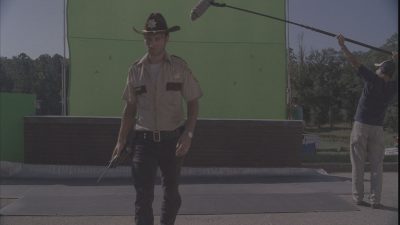
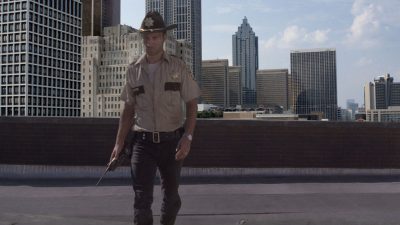
Jason Sperling: Internally, I was not on-set for season two but Victor and I could still communicate effectively, not only with each other but also with what the production needed. And our collaboration with KNB EFX continued and we could lean on them to help inform us of what our final visual effects will look like and how it will fit into the world of the The Walking Dead.
Sam Nicholson: Overall we probably relied on digital effects much more heavily for this second season. The first season was primarily organic blood hits on set, practical bullet hits, practical gun flashes. The digital work that we had accomplished in the first season went so well that the producers found they could save a lot of money and move faster if they didn’t have picture guns on set. It was the same thing with blood hits. We had the digital zombie army, too, from the first season which means the producers could cut down the extras and the time it takes to make them up and rely on digital zombies which look as good if not better as the first season.
Scalise: We’ve done a lot of work in getting our zombies to the next stage. In the first season we kind of kept them pretty small and in the distance. In this season we worked on making them photoreal up close, like that zombie in the pharmacy – he’s right in front of camera next to another lead actor. We also had other parts where we seamlessly blended in digital zombies right next to real extras to make the densities bigger.
fxg: On the first season you’d mo-capped one of the hero zombies. Did you re-do any of that and what was the extra work you had to do on the CG zombies?
Sperling: We did a second round of motion capture using different people to do running, walking and other specific actions that we needed. Then we took that new mo-cap data and apply it to much higher resolution zombie models. We worked extra detail into the hair texturing and gore texturing and refining the overall movement to get it to fit into the practical zombies.
Scalise: That’s because in season one they were really background zombies, but here they are mid-ground and close-to-camera zombies.
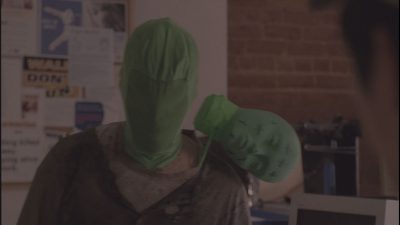
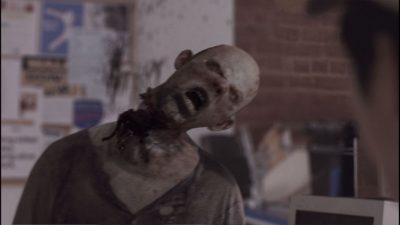
fxg: Can you talk a little more about that shot inside the pharmacy where the zombie’s head is smashed off?
Sperling: We had KNB fully make up the actor. We flew him out to Los Angeles and scanned his face with a laser scanner and were able to use that to then apply that model of his head and the exact make-up that KNB did onto one of our CG bodies, and he was able to become a photorealistic featured zombie interacting with our main characters.
Scalise: On set, that actor was a stunt guy. We put a green hood on him, and had a green head for lighting reference. We had the whole stunt played out and then replaced everything digitally from the neck up.
Sperling: One great thing that Victor was able to do was put this proxy head on him – obviously when it’s almost severed it’s hanging off to the side, so Vic was able to put a proxy greenscreen head in the approximate position and it gave us great cues for the lighting and shading and a ‘natural’ feel that the actor has with his head hanging over the side. All of those things helped inform what the final texturing and lighting of the shot would be. In the end it was definitely a great collaboration between on-set ingenuity, 3D work and compositing.
fxg: What were some of the additional elements required for that shot, like the entrails and blood?
Scalise: We used Darrell Pritchett, the special effects supervisor on the show, and Greg Nicotero’s guys to do specific blood element shoots.
Sperling: Vic also shot some additional blood elements in Atlanta, including slightly curdled milk on a black screen to get a great matte. They were all being pumped out of KNB’s special pump rig which is basically a long tube with a funnel on the end and it creates the spurting motion.
Scalise: I think it’s called the stomper rig. And funnily enough we found that a little bit of wheat flour mixed in with milk that has been sitting in the sun for a few hours gave us pretty good viscosity.
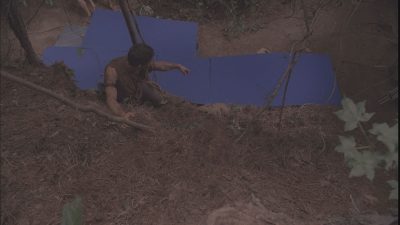
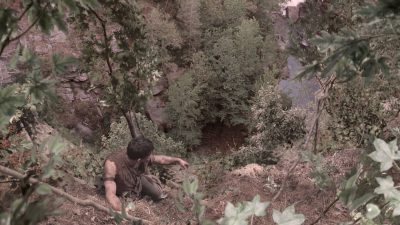
fxg: What was CG pipeline for these shots?
Scalise: The modeling, rigging and animation was done in Maya. The facial expressions were all hand-animated. In the early stages of blocking the effects and working with directors, FrameForge was the tool I was using.
Sperling: And we were doing all of our compositing in After Effects.
fxg: What about Stargate’s virtual backlot work which you’ve used on a number of series – was there a particular shot that used that kind of approach?
Scalise: The moment when Daryl went into the ravine was a good shot. He falls down off the horse at first and tumbles and tumbles into the water and climbs up again and falls again. They really wanted to give this sense that he can’t get back up the mountain. What we did was we shot Daryl hanging from some of the foliage at the location we were at, and shot him on bluescreen. Then we shot some plates and we made up a scene where Daryl was literally eight feet off the ground but we made him 400 feet high.
Sperling: That was a really great example of some of our extensions that were completely seamless. The other shot I personally enjoyed was the vista that Herschel shows to Rick of his property looking out over the Georgian landscape. It was shot on bluescreen because we didn’t exactly know what it should look like. Vic went out and shot plates of rivers and mountains and various other landscapes. We did a beautiful matte painting which was an amalgam of four or five different locations.
Scalise: We also had the bombing of Atlanta. The location guys on The Walking Dead pointed us to a salvage yard where they take re-possessed cars. It had one of the most amazing views of the Atlanta skyline that you could see. That great us a great vista to film off when they’re watching Atlanta being blown up.
Sperling: What was interesting about that scene was that it was set at night, but in order for us to get a great skyline and to really be able to manipulate it the way we wanted to, Vic actually shot the plates during the day. We matte painted them down to night and had two versions of those paintings – a lit and unlit version which would be timed to cue with the explosions so that the compositors would have the control to light the surrounding world of the Atlanta skyline. And we added CG helicopters, tracer fire and explosions that we shot specifically for that explosion and another.
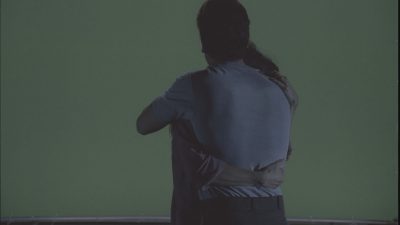
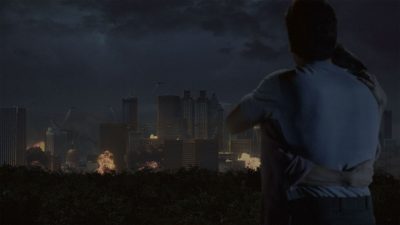
fxg: The series has a very distinctive look and a lot of that comes from being shot on 16mm film. What approach do you take in the visual effects to match the look?
Scalise: A lot of the bigger effects sequences are shot on 35mm. In 16mm there’s too much gate weave and also warping in the film not only when shooting but also when it goes through telecine. So you have all this organic imperfections – so for example in a big matte painting shot, if you’re foreground’s warping, it’s imperceptible watching it play out at 24 frames per second but take an image that we’re going to split through half the frame, all of a sudden that warping becomes really apparent because it’s not translating to the part of the frame that’s an effect.
So in those instances we have to shoot in 35mm. In some cases we will do it 16mm and it comes down to the artist to warp the image a little bit themselves to get a seamless blend. Obviously the 16mm is about the style of the show and it’s more about the show than it is about the visual effects, so we work together with production to compromise on that.
Sperling: We are getting from the 16/35mm negatives a flat pass transfer of that material. We start to do our work on this. That flat pass is basically just telecine’d in such a way that gives us the greatest amount of range in color in order to stay safe in whatever we do, so later down the road in the final color conform they can make any adjustments. We always slave our digital material to what the inherent imagery of the foreground material shot by the DP – what that look is. We’re always balancing to the natural photography.
fxg: All of this of course is done on a TV schedule and budget. Can you talk about some of the challenges of that in terms of the time you have on set, the time to do the actual visual effects work and also reviewing it?
Scalise: In terms of being on set, it’s certainly more of a challenge than on some shows, due to the locations and where we are. We have to get as much done before the sun sets – we’re often out in the middle of the woods…
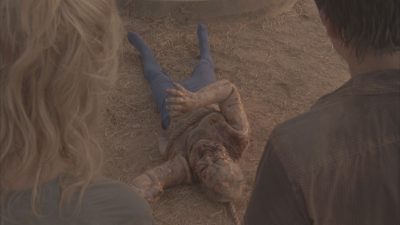
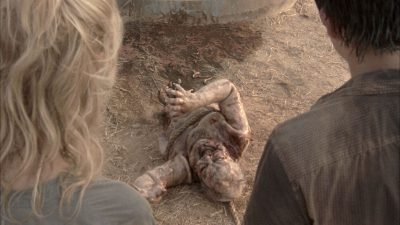
Sperling: … not very close to a RadioShack.
Scalise: So on set we try and be as flexible as we can with production. The camera crew also always helps out by giving us the camera information when we can’t be near there.
Sperling: Also, before going on set Vic would do still mock-ups or other technical diagrams that would give everyone an idea of how it was going to be shot and how they could expect the material to come back to us. That would be my blueprint for taking it the rest of the way with digital supervision. Television is television – we have about 10 days to do our visual effects, and that’s not going to change any time soon. So it’s really about efficiency of communication and distilling down exactly the vision of what was discussed on set.
Nicholson: There’s also a great deal of autonomy in television that does not exist in features – Victor and Jason and myself are all clued into the vibe and look of the show, so we don’t need a lot of supervision to deliver that look. We know when a blood hit is too big or we know when something doesn’t fit the profile of the show. There’s simply not enough time to check every little single thing with the director, because the director may be off on another episode, and you have to deliver the product. We are entrusted with the look of the show and deliver it on a very short schedule, or even sight unseen. So you don’t actually have someone over your shoulder the entire time saying, ‘No, do it like this,’ and that allows us to deliver a product – those are rules going in, really.
All images and clips from The Walking Dead (c) 2012 AMC Film Holdings LLC. All rights reserved.

Pingback: The Walking Dead VFX | digitalmoviemaking
Pingback: Behind the Scenes: Creating Amazing Visual Effects for The Walking Dead - The Beat: A Blog by PremiumBeat